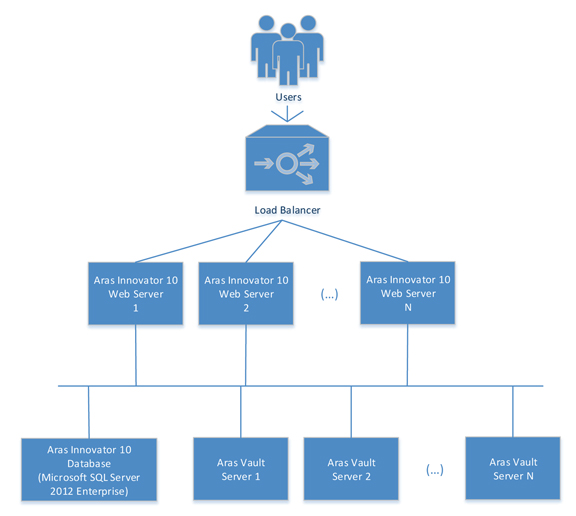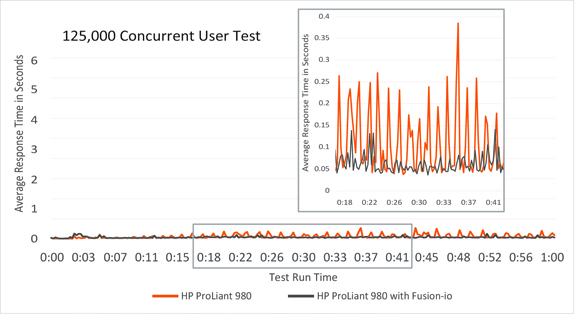Latest News
March 7, 2014
It began as a request from a customer, an automotive OEM, according to Peter Schroer, Aras Corp’s CEO. The customer wanted to know if Aras PLM can be deployed across 100,000+ users without performance degradation.
“So we created a team—Aras, Microsoft, HP, and [tech consulting firm] Logic20/20—to explore the upper limit scalability of the Aras architecture running on Microsoft SQL Server,” said Schroer.
The controlled experiment involves 500,000 named users with 125,000 concurrent users—“the largest testing conducted to date in the enterprise PLM industry,” according to Aras. The results of the benchmark test are published in a PDF report, downloadable at http://aras.com/plm/002298.
Based on its test, Aras reports:
- Aras Innovator 10 and SQL Server 2012 Enterprise Edition running on standard HP server configurations showed strong performance and excellent resource utilization across all tests;
- During testing, average CPU utilization was consistently below 25% and total percentage of CPU utilization never exceeded 30%;
- The average response times were fast across the different concurrent user loads tested from 25,000 to 125,000.
The test completed—the first phase—was specific to running Aras Innovator, Microsoft SQL Server, and HP enterprise servers inside a private data center, not the public cloud. Aras is also planning additional tests—the second phase—to move the test environment from the company’s lab into the Windows Azure cloud.
“All of Aras’s current and near-term future PLM users are running PLM in their own data centers. Cloud adoption has been slow in PLM,” observed Schroer. He sees three are primary roadblocks to SaaS PLM or PLM on public cloud. Schroer said:
- The highly publicized outages (downtime) of other cloud services is certainly a real concern. To have thousands of engineers sitting idle, unable to work because the cloud is currently turned off, is a driver for onsite PLM. But whether the probability of cloud downtime is statistically significant or this is just an emotional response is not clear.
- Every cloud PLM discussion revolves around IP security. Again, this might be a more emotional concern than a rational fact-based issue.
- Most companies do not have sufficient bandwidth in their last-mile connectivity to the Internet. Without it, you just can’t move a large configuration of CATIA files [or any other format] fast enough to/from the cloud.
The usual Aras customer projects are supporting between 15 to 10,000 users, so the benchmark test with 100,000+ users represents the extreme upper limit for the company’s own deployment scenarios. “PLM systems in the 100,000 user scale are all still in the proof-of-concept and early deployment phases,” said Schroer. “Many companies have been waiting for the result of the benchmark testing results before committing to move forward with global rollouts of Aras Innovator PLM.
Subscribe to our FREE magazine, FREE email newsletters or both!
Latest News
About the Author
Kenneth Wong is Digital Engineering’s resident blogger and senior editor. Email him at [email protected] or share your thoughts on this article at digitaleng.news/facebook.
Follow DE







